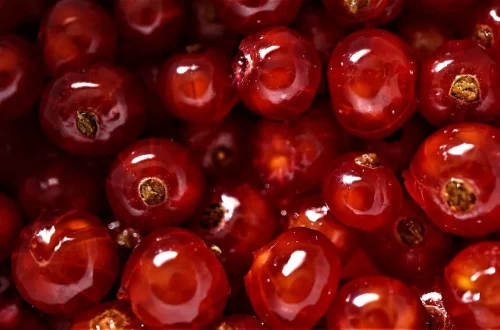
The Benefits of Bute Paste for Horses: A Comprehensive Guide
Bute paste, a common medication used in the equine world, has gained significant attention among horse owners and trainers for its effectiveness in managing pain and inflammation. Derived from phenylbutazone, this non-steroidal anti-inflammatory drug (NSAID) is particularly valued for its ability to alleviate discomfort associated with various equine ailments. As horses are inherently athletic and often engage in rigorous physical activities, they are susceptible to injuries and conditions that can lead to pain and inflammation.
Understanding the role of bute paste in equine health is essential for horse owners who want to ensure the well-being and performance of their animals. The paste formulation allows for easy administration, making it a practical choice for treating horses that may be difficult to medicate otherwise. With its potent anti-inflammatory properties, bute paste can significantly enhance a horse’s quality of life, enabling them to return to their routines with less discomfort.
In addition to its pain-relieving properties, bute paste also plays a role in recovery from injuries and during rehabilitation, making it an indispensable tool in equine management. However, like any medication, it is crucial to understand how to use it correctly and the potential implications of its use. By exploring the benefits and considerations surrounding bute paste, horse owners can make informed decisions that promote the health and performance of their equine companions.
Understanding Bute Paste and Its Uses
Bute paste is primarily used for its analgesic and anti-inflammatory properties. It is particularly effective in treating musculoskeletal issues, such as lameness, arthritis, and post-surgical pain. The paste is often administered to horses recovering from injuries or undergoing strenuous training regimens, where the risk of inflammation and discomfort is high.
One of the main advantages of bute paste is its palatable formulation, which allows for easier administration compared to tablets or powders. This is especially beneficial for horses that are finicky eaters or that resist oral medications. The paste can be delivered directly into the horse’s mouth, ensuring accurate dosing and quick absorption into the bloodstream.
Bute paste is also utilized in various veterinary settings, especially in racehorses and performance horses. Trainers often rely on it to keep their horses comfortable during intensive training sessions. However, it’s essential to use bute paste judiciously, as over-reliance on any medication can lead to potential health risks.
Moreover, while bute paste is effective for short-term pain relief, it is not intended for long-term use due to possible side effects. Responsible horse owners should work closely with their veterinarians to determine the appropriate dosage and duration of treatment. This collaboration helps ensure that the horse receives the most benefit from the medication while minimizing the risk of adverse effects.
Benefits of Using Bute Paste for Pain Management
The primary benefit of bute paste is its ability to manage pain effectively. Whether a horse is experiencing acute pain due to an injury or chronic discomfort associated with arthritis, bute paste can provide significant relief. Many horse owners report noticeable improvements in their horse’s mobility and overall demeanor after administering bute paste.
The quick onset of action is another advantage. Horses often respond to bute paste within a few hours, allowing for prompt relief from pain, which is especially important for competitive equine athletes. This rapid response can help ensure that horses do not miss training sessions or competitions due to avoidable discomfort.
Additionally, bute paste can improve the quality of life for older horses or those with ongoing health issues. By alleviating pain and inflammation, bute allows these horses to engage in more natural behaviors, such as playing, grazing, and socializing with other horses. This enhanced quality of life can have positive effects on their mental well-being, promoting a healthier, happier horse.
Furthermore, bute paste can also be a valuable component of a comprehensive treatment plan for various equine conditions. When used in conjunction with other therapies, such as physical rehabilitation or alternative treatments like acupuncture, bute can enhance overall treatment outcomes. It is important for horse owners to consult with their veterinarians to develop a well-rounded approach to their horse’s health.
Considerations and Precautions When Using Bute Paste
Despite its many benefits, using bute paste requires careful consideration and awareness of potential side effects. One of the primary concerns with NSAIDs, including bute, is the risk of gastrointestinal issues. Horses may experience ulcers or other digestive problems if bute is administered for extended periods or at high doses.
To mitigate these risks, horse owners should adhere to the recommended dosage provided by their veterinarian and avoid using bute paste as a long-term solution. Regular monitoring of the horse’s health, including signs of discomfort or digestive distress, is essential to ensure that the horse remains healthy while using this medication.
Additionally, it’s crucial to be aware of the regulations surrounding bute use in competitive equestrian events. Many governing bodies have strict rules regarding the administration of NSAIDs, and failure to comply can lead to disqualification or penalties. Horse owners should always check the rules of their specific discipline to ensure they are in compliance.
Moreover, certain horses may be more sensitive to bute paste than others. It is essential to observe the horse’s response to the medication, especially during the initial administration. Any adverse reactions, such as changes in behavior, appetite, or signs of distress, should be reported to a veterinarian immediately.
Lastly, while bute paste is a valuable tool in equine health management, it should not replace regular veterinary care. Routine check-ups and open communication with a veterinarian are critical components of maintaining a horse’s overall health and well-being.
Alternative Pain Relief Options for Horses
While bute paste is a widely used option for pain management in horses, several alternatives are available that may be suitable depending on the horse’s specific needs and conditions. Understanding these options can help horse owners make informed decisions about their equine companions’ care.
One alternative is flunixin meglumine, commonly known as Banamine. This NSAID is effective for pain relief and is often used for conditions such as colic and post-operative recovery. Like bute, flunixin is available in various formulations, including injectable and oral forms, providing flexibility for different situations.
Another option is the use of corticosteroids, which can also reduce inflammation and provide pain relief. However, these medications come with their own set of potential side effects and risks, so they should be used under the guidance of a veterinarian. Corticosteroids are often prescribed for specific inflammatory conditions, but their long-term use is generally discouraged due to possible adverse effects on the horse’s overall health.
Emerging therapies, such as joint injections with hyaluronic acid or other regenerative medicine approaches, can also provide pain relief and improve joint health. These treatments work by targeting the underlying causes of pain rather than merely masking symptoms, making them a valuable part of a comprehensive pain management strategy.
Additionally, alternative therapies like acupuncture and chiropractic care have gained popularity among horse owners. These modalities can complement traditional treatments and provide holistic pain relief solutions. While not a substitute for conventional medication, they can enhance overall well-being and support recovery.
Ultimately, the best approach to pain management will depend on the individual horse’s condition, lifestyle, and veterinary recommendations. By exploring various options and maintaining open communication with a veterinarian, horse owners can ensure their horses receive the most effective and appropriate care.
**Disclaimer**: This article is for informational purposes only and should not be considered medical advice. Always consult with a veterinarian for health-related issues concerning your horse.




